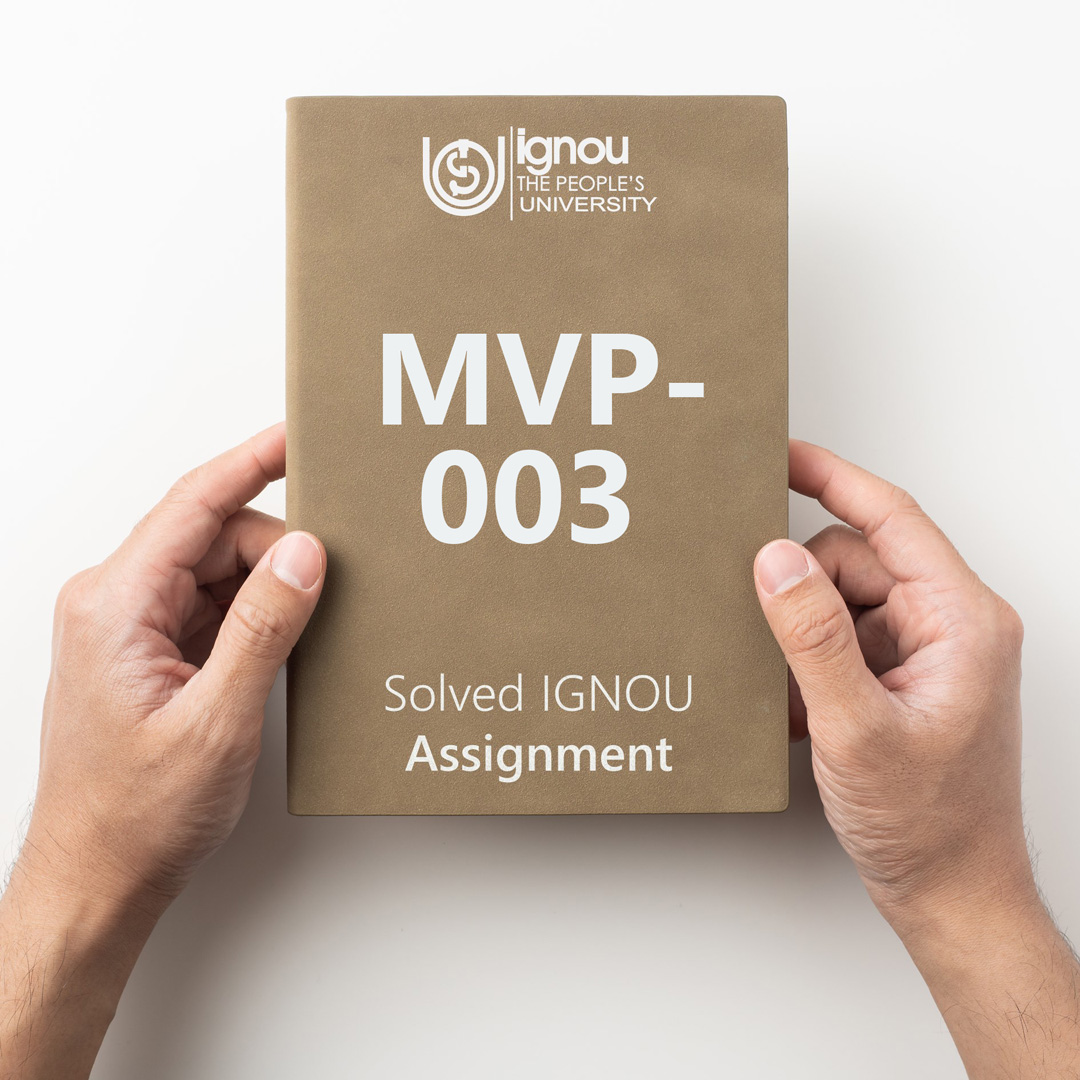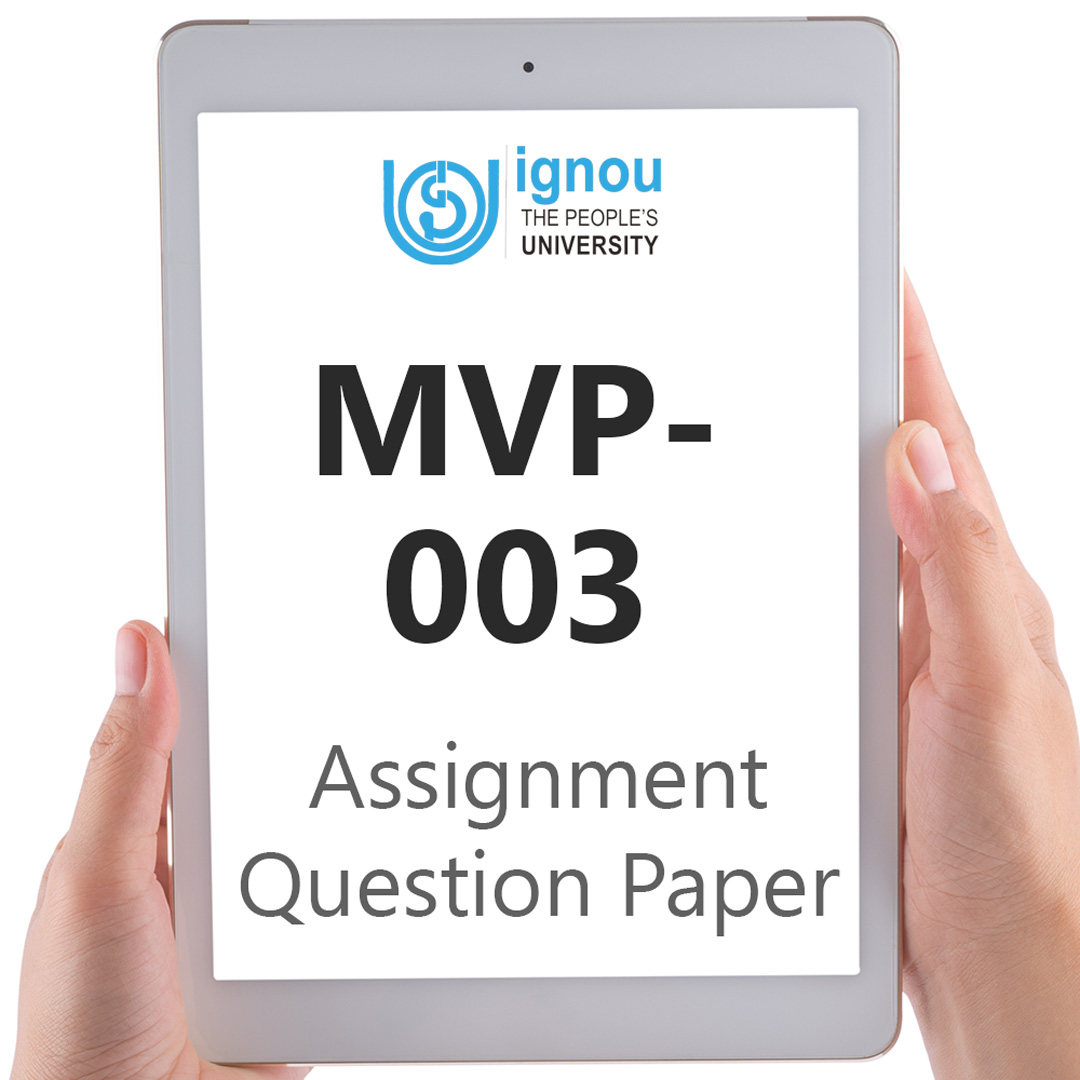If you are looking for MVP-003 IGNOU Solved Assignment solution for the subject Principles of Food Safety and Quality Management, you have come to the right place. MVP-003 solution on this page applies to 2023 session students studying in PGDFSQM courses of IGNOU.
MVP-003 Solved Assignment Solution by Gyaniversity
Assignment Code: MVP-003/TMA/2022
Course Code: MVP-003
Assignment Name: Food Safety and Quality Management
Year: 2022
Verification Status: Verified by Professor
Attempt all the questions.
Q1) What are the benefits and barriers in implementing HACCP? Explain the principles of HACCP.
Ans) HACCP (Hazard Analysis and Critical Control Points) is a food safety management system that helps to identify, evaluate, and control potential hazards in the food production process.
Benefits in Implementing HACCP
Improved Food Safety: HACCP helps to identify and prevent food safety hazards, reducing the risk of foodborne illnesses and ensuring the production of safe and wholesome food.
Compliance with Regulations: HACCP is recognized by national and international food safety regulations and can help organizations comply with these regulations.
Enhanced Reputation: Implementing HACCP can enhance the reputation of an organization by demonstrating a commitment to food safety and quality.
Increased Efficiency: HACCP can help to streamline the food production process, reduce waste, and increase efficiency by focusing on the critical control points where hazards can be controlled.
Barriers in Implementing HACCP
Cost: Implementing HACCP can be expensive, requiring investment in training, equipment, and processes.
Time: Establishing HACCP systems can be time-consuming, requiring detailed analysis and documentation of the food production process.
Resistance to Change: Some organizations may resist implementing HACCP due to a resistance to change or a lack of understanding of the benefits of the system.
Principles of HACCP
Conduct a Hazard Analysis: Identify potential physical, chemical, and biological hazards in the food production process.
Determine the Critical Control Points (CCPs): Identify the points in the production process where hazards can be controlled.
Establish Critical Limits: Determine the acceptable limits for each CCP.
Implement Monitoring Procedures: Develop procedures for monitoring the CCPs to ensure that critical limits are being met.
Establish Corrective Actions: Develop procedures for correcting problems that occur when critical limits are not met.
Implement Verification Procedures: Develop procedures for verifying that the HACCP system is working effectively.
Establish Record-Keeping and Documentation Procedures: Develop procedures for documenting the HACCP system, including the hazard analysis, CCPs, critical limits, monitoring procedures, and corrective actions.
Q2) (a) Describe the principles and elements of Good Agriculture Practices (GAP).
Ans) The principles of GAP are:
GAP standard: The Scheme Owner, working with a Technical committee (governmental body/regulatory body) of subject-matter specialists, creates the GAP standard for farmers. This stand-alone document can be implemented by the producer without certification. The National Standards Body can also create it.
Standards: Requirements are categorised as "critical," "major," and "minor" with acceptable deviations.
Governance: The Scheme Owner must establish a GAP decision-making and supervision structure. This could have two levels: a Steering Committee at the top, a Technical Committee for standard and technical matters, and a Certification Committee for certification and policy matters.
Certification Process: The evaluation, verification, and certification process must be documented to ensure uniformity in farmer certification practises and meet ISO 17065 and Scheme requirements.
Certification Mark Guidelines: The Scheme Owner owns the certification mark, so farmers/producers, CBs, and AB need clear guidelines for using it.
The elements of GAP are:
Prevention of problems before they occur.
Risk assessments.
Commitment to food safety at all levels.
Communication throughout the production chain.
Mandatory employee education program at the operational level.
Field and equipment sanitation.
Integrated pest management.
Oversight and enforcement.
Verification through independent, third-party audits.
Q2) (b) Explain the objectives of traceability. Describe the components of the traceability tool.
Ans) The objectives of traceability are to:
Ensure Food Safety: Traceability helps to identify the source of food safety issues and respond quickly in the event of a foodborne illness outbreak.
Facilitate Recalls: Traceability systems make it easier to identify and recall products in the event of a food safety issue or product contamination.
Improve Efficiency: Traceability can help to streamline operations, reduce waste, and improve efficiency by providing accurate and up-to-date information about the origin, movement, and status of products.
Enhance Customer Confidence: Traceability can increase customer confidence in the quality and safety of food products by demonstrating the transparency and accountability of the food supply chain.
The components of a traceability tool include:
Identification: Products and their components are identified with unique codes or numbers to enable tracking.
Collection and Storage of Data: Information about the origin, movement, and status of products is collected and stored in a centralized database.
Communication: Information about products is communicated between supply chain partners in a timely and accurate manner.
Analysis: Information is analysed to identify trends, potential issues, and opportunities for improvement.
Response: Appropriate action is taken in response to food safety issues or product recalls.
By implementing a traceability system, organizations can increase transparency, accountability, and efficiency in their food supply chain, while also ensuring food safety and customer confidence.
Q3) Write notes on risk management and risk communication.
Ans)
Risk Management
Risk management is the systematic process of identifying, analysing, and responding to potential risks that could impact an organization's ability to achieve its objectives. The goal of risk management is to minimize the impact of negative events and maximize the potential benefits of positive events. This involves a continuous cycle of risk identification, assessment, control, and monitoring.
Risk identification involves identifying all potential risks that could impact an organization. This is done by gathering information from internal and external sources, including past incidents, industry trends, and changes in the business environment. Risk assessment involves analysing the likelihood and potential impact of each risk. This helps to prioritize risks and determine which risks require the most immediate attention.
Risk control involves implementing strategies to reduce the likelihood or impact of a risk. This may involve avoiding the risk altogether, transferring the risk to another party, or accepting the risk and developing contingency plans to minimize the impact.
Risk monitoring involves ongoing monitoring and assessment of risks to ensure that control measures are effective and that new risks are identified in a timely manner. This helps to ensure that risk management strategies are working as intended and that the organization is prepared to respond to new risks as they arise.
Risk Communication
Risk communication is the process of exchanging information about risks, risk management strategies, and risk mitigation measures between organizations, stakeholders, and the public. Effective risk communication is critical to ensuring that stakeholders understand the risks and are informed about the measures that are being taken to manage those risks.
Risk communication should be transparent, timely, and accessible, and should be based on the latest scientific information. This may involve a range of communication channels, including written materials, presentations, webinars, and public meetings.
To ensure effective risk communication, organizations should develop a risk communication plan that outlines the key messages, target audiences, and communication channels that will be used to communicate about risks and risk management measures. The risk communication plan should also include strategies for engaging with stakeholders and ensuring that their questions and concerns are addressed in a timely and transparent manner.
Q4) Describe the HACCP prerequisites.
Ans) The HACCP (Hazard Analysis and Critical Control Points) prerequisites refer to the basic conditions that must be in place to implement a successful HACCP program. The prerequisites provide a foundation for the HACCP process and are essential for ensuring that food safety hazards are effectively managed.
The prerequisites of HACCP include:
Management Commitment: The management must be committed to implementing and maintaining a HACCP program and ensuring that the necessary resources are available.
Hazard Analysis: A hazard analysis must be conducted to identify potential physical, chemical, and biological hazards that could impact the safety of the food.
Food Safety Policy: The organization must have a written food safety policy that outlines its commitment to food safety and the principles of HACCP.
Good Manufacturing Practices: The organization must have a system in place for implementing GMPs, which are the basic hygiene and sanitation practices that are necessary to prevent contamination of food.
Personnel Training: All employees must be trained in food safety and the principles of HACCP and must understand their role in ensuring food safety.
Documentation and Record-Keeping: The organization must have a system for documenting and record-keeping, which is essential for monitoring and verifying that HACCP processes are working as intended.
Verification: The HACCP program must include ongoing verification activities, such as inspections and testing, to ensure that critical control points are being effectively managed.
In conclusion, the HACCP prerequisites provide a framework for establishing a food safety management system that is based on the principles of hazard analysis and critical control points. By implementing these prerequisites, organizations can effectively manage food safety risks and ensure that the food they produce is safe and of high quality.
Q5) (a) Define Total Quality Management and give its benefits. Enumerate dimensions of quality with respect to a manufactured food and for a service.
Ans) Total Quality Management is a continuous improvement approach to managing an organization that seeks to optimize all aspects of the business to achieve a high level of customer satisfaction and efficiency. TQM emphasizes the importance of involving all employees in the quality improvement process and integrating all functions and processes within the organization. The benefits of TQM include increased customer satisfaction, improved efficiency and productivity, increased competitiveness, improved employee morale, and increased profitability. TQM helps organizations to continuously improve their products and services, making them more competitive in the marketplace and contributing to their overall success.
The dimensions of quality with respect to a manufactured food are:
Conformance to Specifications: This refers to the product meeting the specified standards and requirements.
Safety and Hygiene: This refers to the safety of the product for human consumption and the hygienic conditions in which it is manufactured and packaged.
Nutritional Value: This refers to the nutritional content of the product and its ability to meet the dietary needs of consumers.
Appearance and Packaging: This refers to the appearance of the product and its packaging, including the colour, texture, and overall appearance.
The dimensions of quality with respect to a service are:
Reliability: This refers to the consistency and dependability of the service, ensuring that it is delivered as promised.
Responsiveness: This refers to the speed and willingness of the service provider to respond to customer needs and expectations.
Assurance: This refers to the knowledge and courteousness of the service provider and their ability to inspire trust and confidence in the customer.
Empathy: This refers to the ability of the service provider to understand and care about the needs of the customer.
Tangibles: This refers to the physical appearance and the environment in which the service is delivered, including the facilities and equipment used.
Q5) (b) Write short notes on GMP and GHP.
Ans) Good Manufacturing Practices are a set of guidelines that outline the standards for the manufacturing of food, pharmaceutical, and medical products. GMP is a quality control system that aims to ensure that products are consistently produced and controlled to meet regulatory requirements and to maintain the safety and quality of products. The guidelines cover all aspects of the manufacturing process, including facilities, equipment, personnel, procedures, and documentation.
Good Hygiene Practices refer to the measures and procedures that are put in place to maintain the cleanliness and sanitation of food processing facilities and to prevent contamination of food products. GHP is a critical component of food safety and quality control, as it helps to minimize the risk of foodborne illness and other health hazards associated with food. The principles of GHP include maintaining clean and hygienic facilities and equipment, controlling the presence of pests, implementing proper personal hygiene practices, and following proper food handling and storage procedures.






